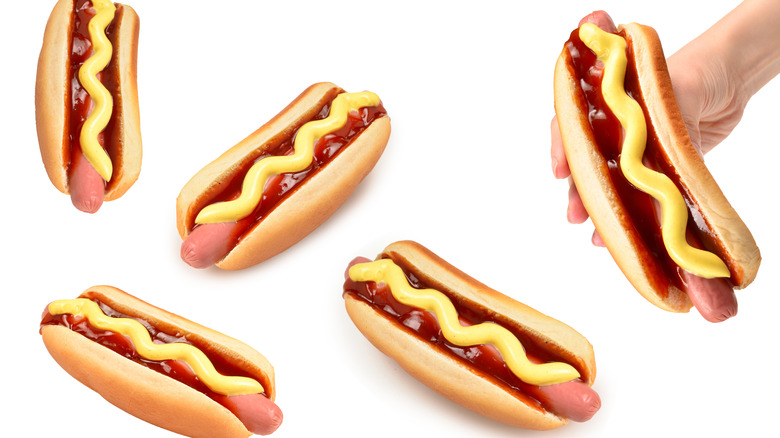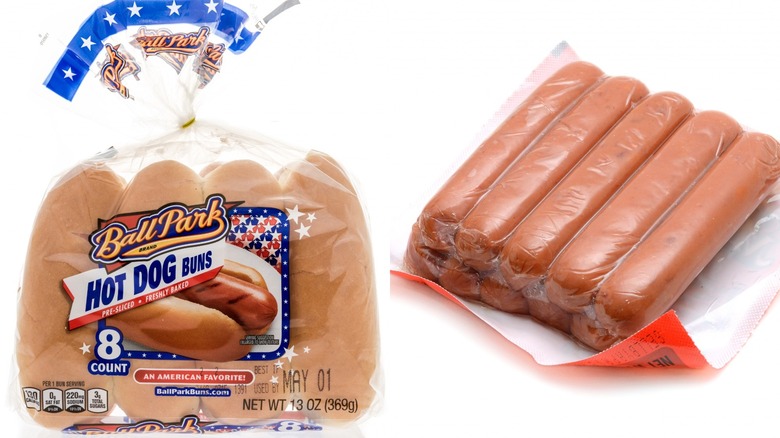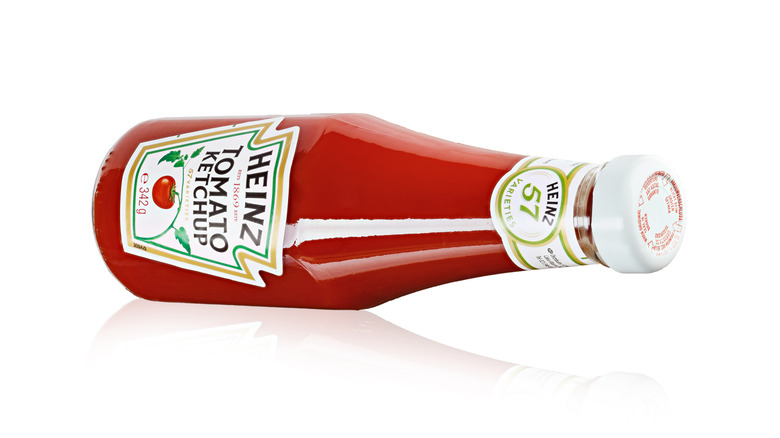Why Are There Only 8 Hot Dog Buns In A Pack?
Hot dog eaters have been grappling with a puzzling problem for decades. In fact, this illogical conundrum has been part of the status quo for so long that most people no longer give it any thought. And yet it lingers. Barbecuers and picnickers across the continent have been left coping with the fact that store-bought hot dogs come in packs of 10, while their accompanying buns are sold in bags of eight.
While The New Yorker offers that the best solution from a math standpoint is to purchase four packs of wieners and five bags of buns (thus winding up with 40 hot dogs and 40 hot dog buns), most families would find the prospect of devouring this many hot dogs a daunting task. Tbsp. recommends a number of ways to use bunless wieners such as hot dog fried rice, chili dog mac and cheese, or mini bacon crescent dogs. The truth is that even if you wind up adding your excess hot dogs to a bowl of Kraft Macaroni and Cheese, one burning question remains. Hot dog buns are sold for the sole purpose of holding hot dogs. Why, then, do hot dogs and buns possess different product counts?
Mismatched packaging counts are a manufacturing issue
While many contend that this mismatched number of wieners and buns is an orchestrated ploy to force consumers to buy more, it appears that this is just a conspiracy theory. Eric Mittenthal, the president of the U.S. National Hot Dog and Sausage Council, reported on the "As It Happens" show (via CBC) that it's all a matter of manufacturing ease. Meat is sold by the pound and 10 wieners weigh in at just under a pound. Buns are baked in pans that make eight buns at a time. When asked about a possible alignment of the minds (and product counts), he simply said that "The hot dog is the star of the show. The bun is an accessory to the hot dog. So we think it makes the most sense for the buns to adjust."
Why were bun trays built to create multiples of four in the first place? The Hot Dog.org purports that one possible explanation is that bakers seem to like to use fours, hence the "4x2 arrangement" of the buns. Plus, if you've noticed that each row of buns is stuck together and must be physically separated, this is the way they're baked with "four buns across."
Will this situation ever be rectified? After the launch of a well-known company's campaign to bring about an even number of buns and wieners, one bun manufacturer listened.
Heinz is seeking a solution
When Heinz started its "Hot Dog Pact" initiative, a Change.org petition to establish some congruence in both bun and wiener packaging, hot dog fans took action. To date, well over 35,000 people have added their signatures to the cause and the number continues to rise. As a result of Heinz's efforts, Wonder Buns now sells bags of 10 in Ontario, Canada. Heinz won't stop there, as the company states "We've succeeded in select parts of Canada but we're not stopping until the hot dog packaging mismatch is solved globally. Hot dog history is in your hands."
In response to Heinz's petition, the U.S. National Hot Dog and Sausage Council suggested that ketchup has no business in the hot dog realm. President Eric Mittenthal says "In the city of Chicago they would kick you out if you ordered ketchup on a hot dog at any age. We're a little bit more moderate. We say that over the age of 18, no more ketchup," (via CBC). While Chicago's opposition to putting ketchup on their hot dogs is no secret, Heinz is also a purveyor of mustard and relish, two popular and "acceptable" hot dog condiments in the Windy City and beyond. Some may say this, alone, makes them perfectly justified in entering any wiener-related debate.
Perhaps, packages of ten hot dog buns will appear at a grocery store near you in the future and the world will make sense once again.


